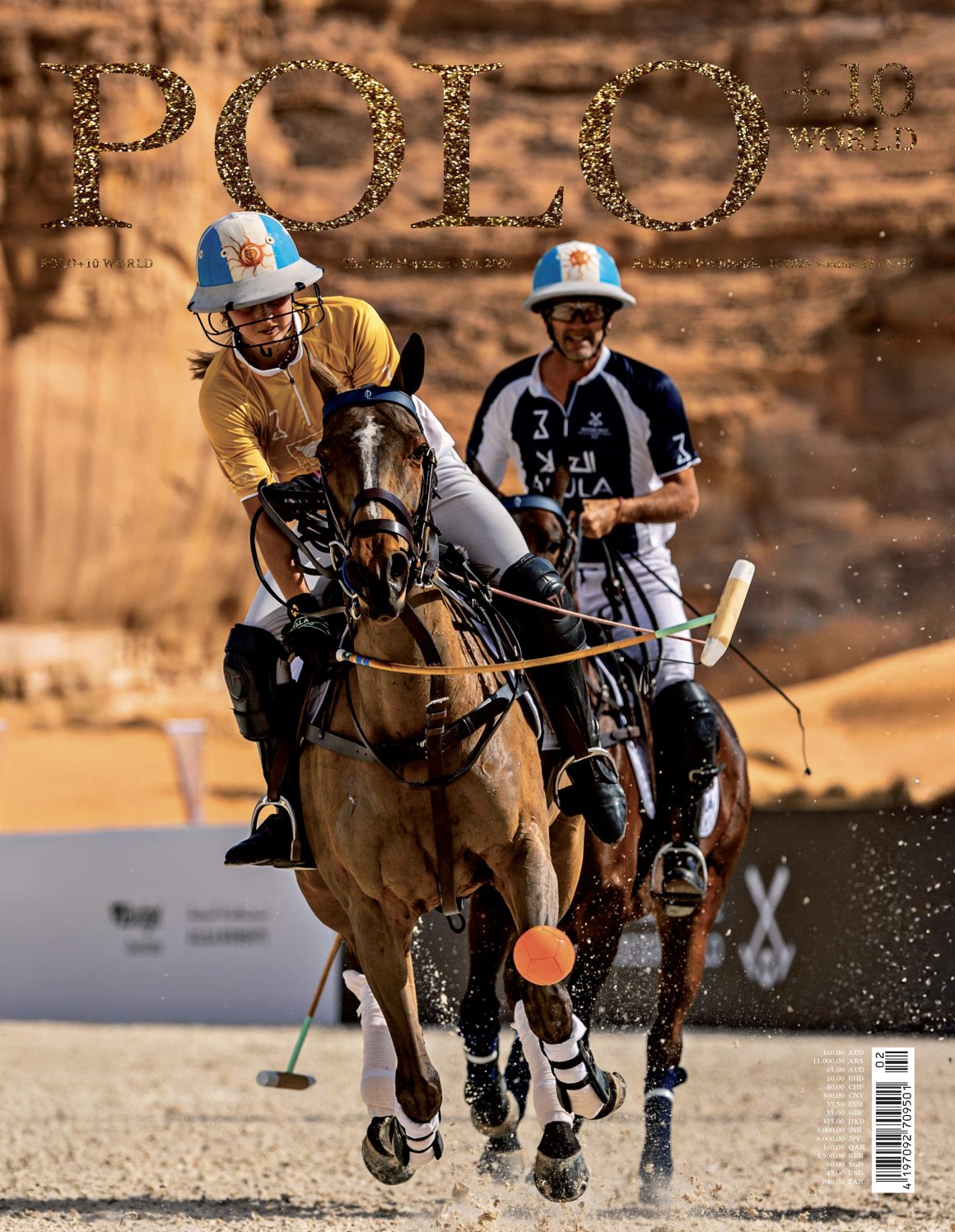By Dr med vet Lena Horn, veterinary adviser at the POLO+10 team.
It is hot outside and not only the players suffer, but also the pony’s metabolism is vulnerable to high outside temperatures. In general, horses can handle much better lower temperatures than heat. While competing in hot and moist environments, horses are more likely to experience fatigue and dehydration which can ultimately lead to a heat stroke, a serious and sometimes devastating situation.
Heat stroke / Heat exhaustion:
The combination of a hot and moist environment and high-level exercise amplify the risk that your pony might experience a heat stroke. This is a very serious condition and you should alert the vet on duty immediately.
The following symptoms may indicate that your horse is suffering from heat exhaustion / heat stroke:
• Your pony sweats a lot – even when standing without effort.
• Your pony’s skin feels very hot.
• Your pony’s respiratory rate is high.
• Your pony displays agitation (head shaking, scrapes the ground with its hoofs) or
abnormal behavior (aggression) or puts its head down, looks tired and apathetic.
• Your pony has coordination difficulties and staggers.
• The muscles of your pony are cramping.
• Your pony is dehydrated – you can tell by the skinfold test (see below).
These symptoms (not all have to be present) need to be taken very seriously and they are likely to progress and, if left untreated, can result in a collapsing horse.
Until the vet on duty arrives bring your horse in the shade, or if possible, in a cool, quiet room and start cooling it (cold towels, hose and scrape see below). Always be careful around an exhausted horse and protect yourself from injuries. The vet will assess the degree of heat exhaustion and will initiate the appropriate therapy (intravenous fluid therapy and electrolyte supplementation, fluids via a gastric tube, sedation etc.)
During the hot summer months you can optimize various factors and even increase the performance of your ponies during the game.
Environment:
Give the horses time to adapt to a new environment and especially to high temperatures. Make sure that the barn is well ventilated, that the ponies have shade outside on the paddocks and while waiting for the game and that the trailers don’t heat up in the burning sun.
Clear colored light- or fly screen blankets can also protect the horses from the sun (a dark coat will make the pony heat up faster). Clipping horses with dense fur will also be beneficial, but you should always check if the horse has no underlying disease (e.g. equine cushing syndrome) causing it to have troubles in shedding properly. Protect the eyes and the nostrils of unpigmented or gray horses from UV radiation (sun screen, eye masks).
Appropriate training:
The ponies should be fit to compete. During exercise the blood flow to the skin increases while the cardiac output and the oxygen delivery to the muscles decreases. A physically well trained, muscled and healthy pony will have a higher cardinal blood output, it’s blood and muscles will be better oxygenated and recovery time after exercise will be shorter. A fit pony is less predisposed to experience fatigueor a heat strokeduring high-intensity exercise in a hot environment. Additionally, well trained horses are less prone to orthopedic injuries.
Fluid and foodsupply:
Always make sure that your horses are well fed and hydrated, especially before and after the matches. This will not only allow them to be at the best performance level, but will also diminish the risks of complications related to the gastrointestinal system (e.g. inappetite, colics, gastric ulcers)and metabolic dysfunctions (ty-up, muscle fatigue).
Water:
Without enough fluids the equine body will not function appropriately. During exercise a dehydrated Ponywill be more suspect to attain a higher core temperature, will faster experiencefatigue, it’s blood will carry less oxygen and it’s performance will be compromised. Make sure that your horses always have access to clean and cool water. Especially if a pony plays more than one chukker allow it to rehydrate (small sips) during the periods of rest. Don’t forget to bring your own, clean water buckets. In order to minimize the risk of the spread of infectious diseases, do not let the ponies drink directly from the troughs in the pony line and only use them to fill up your buckets. To monitor the level of hydration of your pony you can use a very simple test: the skin fold test.
Take some skin on the neck area of your horse between your thumb and forefinger and watch as you release the skin. If the skin does not pull back immediately, but it takes a little longer, this is a clear indication that your horse lacks fluid.
Feeding:
Avoid feeding large meals 1-2 hours prior to intense exercise. The intake of large amounts of feed can alter the body’s optimal response to cardiovascular and thermoregulatory stress. Small amounts of hay should be offered until half an hour before exercise. An empty stomach leads to higher gastric acid secretion and gastric ulcers are more likely to occur.
Feed supplementation:
When horses sweat, they lose large amounts of electrolytes. These salts are indispensable for neurological and muscular function and cannot be stored within the body. Therefore, especially in summer, electrolytes need to be supplemented. Salt lick sticks can be a good source, but to be sure that every horse maintains an optimum electrolyte level it is recommended to supplement the feed. Commercial powders that can be added to the drinking water are available, but many horses will not drink these and to avoid dehydration you should always make sure to offer also plain clean water.
The supplementation of glucose, fat, hydrolysable starches and sugars in diets for athletic horses can increase the pony’s abilities to perform. Ask your vet about commercially available food formulas. There are some good products out there.
Match day:
If it is a really hot day and the horses where trailered to the playground and already arrive sweating you might want to refresh your pony with a shower (begin with the posterior legs and slowly work your way to the front of the body) or sponge them off with fresh water before the chukker. To avoid that the heat gets trapped between the skin and the wet coat, what would lead to an increase of the core temperature, always use a scraper to scrape of the water from the pony’s coat. Before playing, warm up the ponies. This does not only preventfrominjuries, but also ensures a better blood circulation and oxygenation of the muscle tissue and will prepare the ponies metabolism for high-level exercise.
Allow the ponies to recover in between the chukkers. Walk them until the heart and respiratory rate slow down. If possible, untack them or at least loosen the saddle girth and nose band. Provide them with shade and small sips of clean and fresh water (avoid too cold water). Sweat should be wiped off with a moist sponge. You can also provide cooling with wet towels that you lay on the blood vessels that are visual beneath the skin (neck, back and between the hind legs). If possible, the horse can be hosed off.
After playing allow all ponies to recover appropriately before putting them back into their stall or trailering them back to the barn. This includes walking them until they stop blowing and their heart rate slowed down, hosing them off in the wash bays (big muscle portions should be well cooled down as these tend to produce heat even after the exercise, excessive sweat might irritate the skin and needs to be washed off) and offering them small amounts of clean water until their thirst is drenched.
Make sure the ponies have access to good quality hay and fresh water when they arrive at the barn and avoid feeding high energy feeds right after the game.
Thomas Wirth, CEO POLO+10: “We are pleased to welcome Dr. Lena Horn to our team as a veterinary consultant. In the future we also want to increasingly work on topics in the fields of medicine, care, training optimisation and prevention.”




























